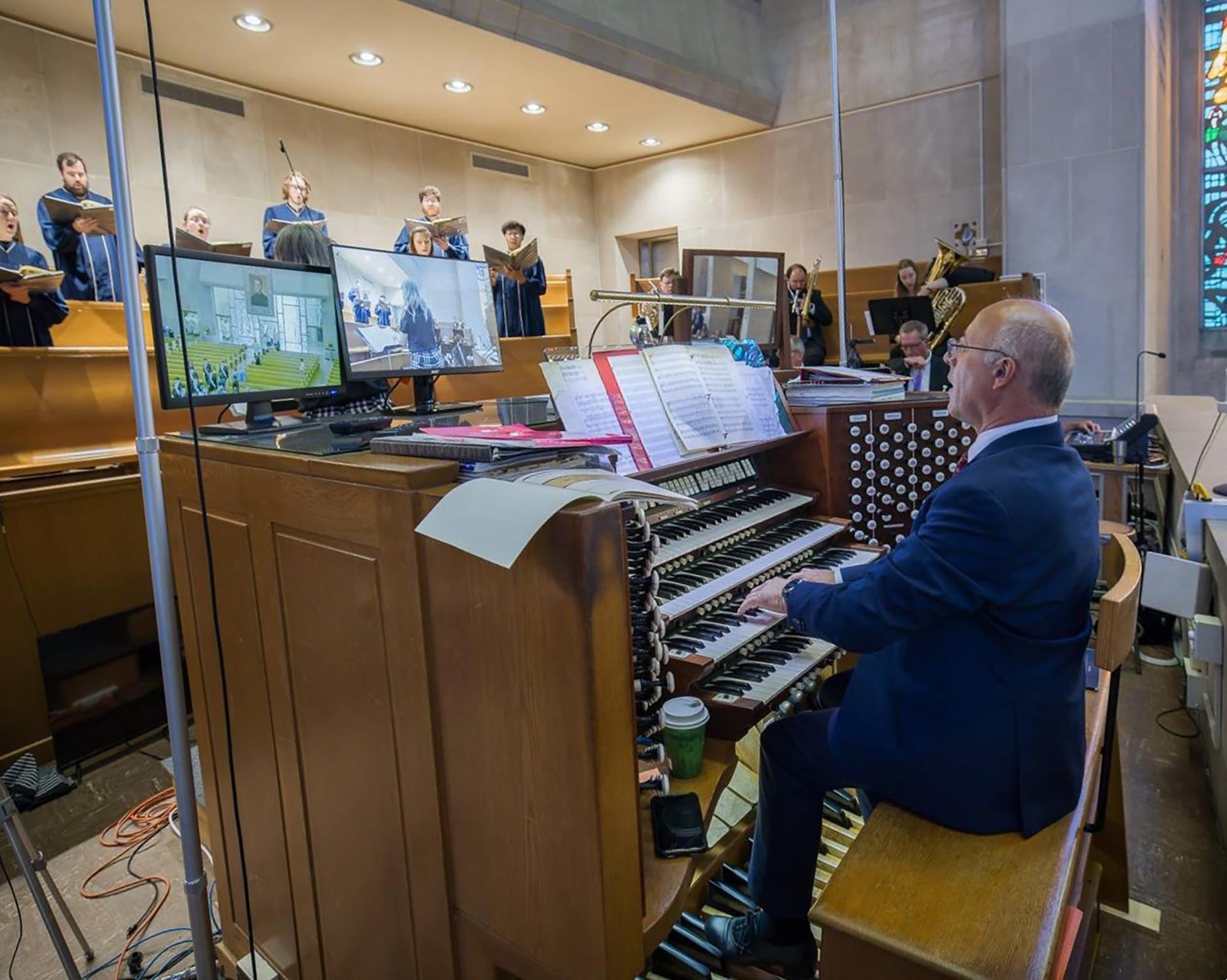
The Cathedral Schola Cantorum joins parishioners in singing prayers and hymns that feature the word “Alleluia” during last year’s Easter Mass at the Cathedral of St. Joseph in Hartford.
Story by Shelley Wolf | Photos by Aaron Joseph
Have you ever noticed that the liturgical seasons affect the use of the word “Alleluia”? In the spring, it comes and goes and comes back again – from Ordinary Time, to Lent, to the Easter Season.
This shift in language – coupled with music, instrumentation and mood – is expressed in all Catholic parishes. So take note. But perhaps it is most noticeable in those with extensive music programs and professional choirs, such as at the Cathedral of St. Joseph in Hartford.
LENT: ABSTAINING FROM ALLELUIA
On the Sunday before Ash Wednesday – just before Lent begins – parishioners at the Cathedral sing “Alleluia, Song of Gladness,” a hymn that refers to “Alleluia” as “the anthem ever dear to choirs on high.” In other words, to sing “Alleluia” is to join in singing with the choir of angels in heaven.
“We use it at the end of Mass, and it is a farewell to Alleluia,” says Ezequiel Menéndez, the Cathedral’s director of music.
That’s because once Lent begins, the Catholic Church refrains from using “Alleluia” throughout the Lenten season. Instead, during the 40 days of Lent – a penitential season – Catholics are encouraged to reflect and purify themselves as they await Easter.
“The whole tone is more somber,” Menéndez explains. “We don’t use instruments or organs before or after the Mass, only to accompany the singing. The Gloria is not sung, and the Alleluia is replaced. I am careful when I choose hymns that the word ‘Alleluia’ is not in there.”
For further emphasis on Holy Thursday, Good Friday and a portion of Holy Saturday, “we turn off the organ and sing a cappella,” he adds.
THE EASTER SEASON: BRING IN THE TRUMPETS!
At the Easter vigil Mass, Catholics everywhere return to joyful prayers and songs that rejoice in the Resurrection of Jesus and the belief that all holy Catholics will join Christ in heaven.
At the Cathedral of St. Joseph, part way through the long Easter Vigil Mass, when the congregation finally reaches the “Gloria,” the organ comes back, along with trumpets and other festive instruments. Additionally, the cantor leads the people in singing three verses of Psalm 118, the “Hymn of Thanksgiving.”
And immediately before the Gospel is read, the “Alleluia” makes its triumphant return. “Alleluia,” which comes from the Hebrew word “hallelujah,” means “Praise the Lord!” In every parish, it is intoned three times: “Alleluia! Alleluia! Alleluia!”
This utterance of praise is also added to the “dismissal” at the end of Mass with, “Go forth, the Mass is ended, Alleluia, Alleluia. Reply: Thanks be to God, Alleluia, Alleluia.”
But the spoken and sung prayers are just the beginning. Easter and the Easter season are also a time for exuberant praise for God through Easter hymns, choral music and instrumental music.
“During Holy Saturday, Easter Sunday and the Easter season, I include as many hymns and choir pieces as possible with ‘Alleluia’ in them,” Menéndez says.
On Easter Sunday, parishioners everywhere may recognize the popular hymn, “Christ the Lord Is Risen Today,” composed by Charles Wesley in 1739, with its joyful “Alleluia” at the end of every line.
The Cathedral Schola Cantorum typically concludes Easter Sunday Mass with the spectacular “Hallelujah Choruses” from the sacred oratorio, Handel’s Messiah, which was composed in 1741 and may be the musical pinnacle of expressing human joy in the Divine.
Throughout the Easter season, Menéndez notes, the Cathedral and many other congregations will sing well-known and uplifting hymns, such as “Ye Sons and Daughters” and “The Strife Is O’er,” which continue to profess humanity’s joy in the Resurrection.

The choir is accompanied by Ezequiel Menéndez, music director at the Cathedral for the past 25 years, who is seated at the organ. This month, Menéndez received a St. Joseph Archdiocesan Medal of Appreciation from Archbishop Leonard P. Blair for outstanding service to the Archdiocese of Hartford.
